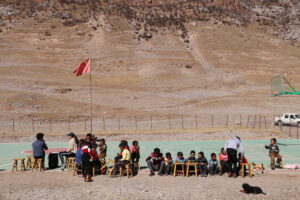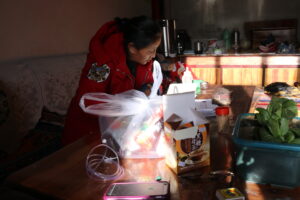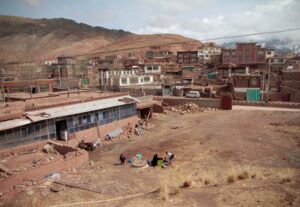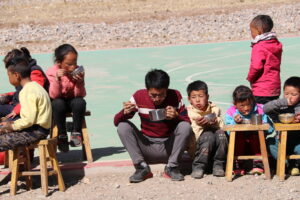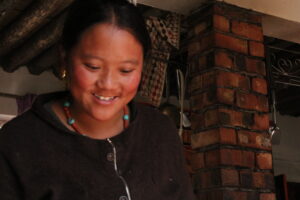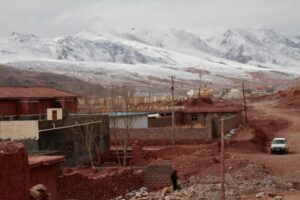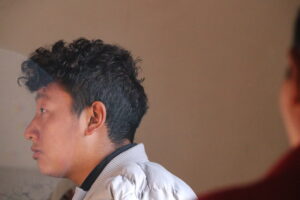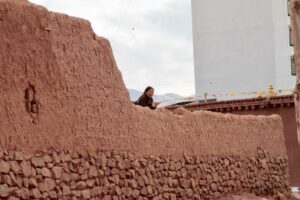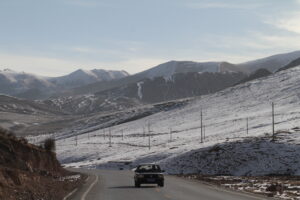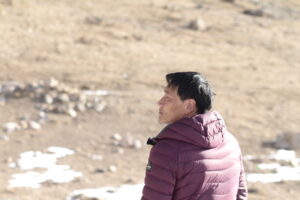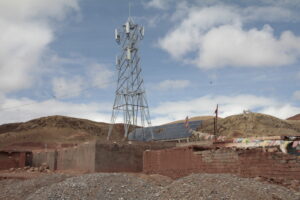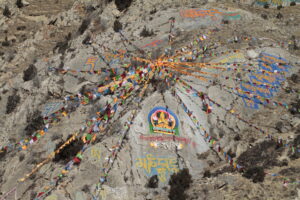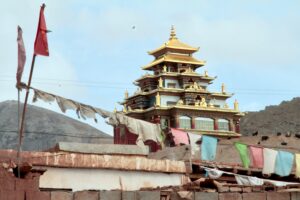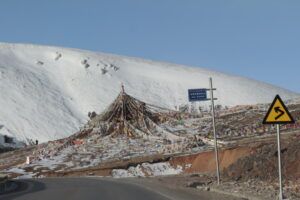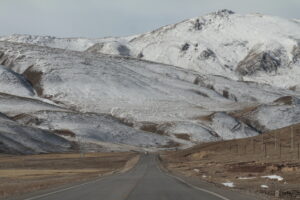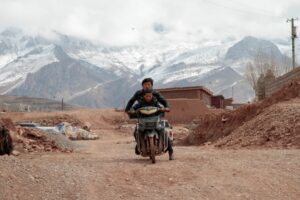2018 三月、八月、十一月 | 扎西格森學校主持人:蒼薩貢葛 ཚང་སར་ཀུན་དགའ། | 扎西格森校長:達哇堪布 ཟླ་བ་མཁན་པོ། | 溫室建造計劃主持人:蒼薩貢葛 ཚང་སར་ཀུན་དགའ།,Wiriya Rattanasuwan | 基地地主:蒼薩美多 ཚང་སར་མེ་ཏོག | 當地協調者:蒼薩毛吉 ཚང་སར་མོ་སྐྱིད།
溫室之心計劃紮根於藝術家施惟捷和來自泰國的環境工程師薇麗雅(Wiriya Rattanasuwan)的國際義工行動,2018 年 11 ⽉他們與 扎格森慈善學校和囊謙縣的當地居民建立了第一個溫室建築原型,期待為被學校庇護的孤兒們提供全年食物。在溫度降⾄ -30°C 的冬季中要餵養所有學⽣是極度困難的。由藝術家和研究人員構思和建造的溫室必須要抵禦寒冷的天氣,並且全年都能保持⾼效。因此,該計劃的首要挑戰之一是建立一個可運作的溫室模型,以生產適量的食物和良好的營養品質。從這個根源,我們希望發展不同的分支:科學研究實驗室和藝術計劃,並且期待透過這些分支回頭來支援溫室的建造計劃。由於各種科技在計劃中的參與,社區溫室因此成為⼀個跨域的實驗場所。其中一個主要實驗是將物聯網傳感器集成到溫室結構中,因此我們希望能夠收集特定於高海拔環境的天氣和環境數據,這些數據將在公共互聯網平台上傳播,創建第一個鏈接不同領域的研究人員之間的開放社群網絡。所有這些活動相互聯繫,並在溫室計劃中融合,儘管我們的第二個挑戰是引導這些跨域合作能合諧交融,所有人都能在其中有空間呼吸和茁壯成長。
受到安娜親(Anna Lowenhaupt Tsing)和她的著作:「末日松茸」的啟發,這個溫室是生長和實驗生態的基礎;人類、生物和技術。使⽤安娜親的話,我們的目標是創造一個「複音聚合(polyphonic assemblaged)的世界打造計劃,人類和非人類的」。正如作者所解釋的那樣,我們周圍已經有各種世界打造計劃,影響著我們的環境,但在人類世時代,人類活動使所有其他生物體都黯然失色。通過注意這些其他活動並與之合作甚至⿎勵它們,我們可以創造一個有效的生態學,人類和非人類的主體可以共同生活,我們建議替代那些以⼈類中心為本,並危及今天我們的星球和我們的生活的工作。
從透過關注有限且精確的文本開始(扎格森學校),使溫室計劃通過科學家的網絡和藝術家以及文化組織的合作網絡進行全球範圍內的擴展,我們希望通過這些合作增加國際能見度。能見度確實是我們的最後一項挑戰。囊謙是西藏的一個偏遠地區,由於從溫室發展出來的藝術和科學網絡,這個地區將在世界上越來越受到關注。透過典型藝術市場或科學資助系統以外的溝通渠道,這種擴展將得以實現,這要歸功於一個將本地居民的教育和利益放在首位,並向研究和創作提供可訪問信息共享的計劃,這些信息可供希望使用溫室數據的人使用,不僅限於學術機構。我們正在探索基於分享、空間和資源的慈善經濟的可能性,讓各種生命形式都能夠生存和茁壯成長。
2018 March, August, November | Founder of Tashi Getsen Charity School: Tsangsar Kunga ཚང་སར་ཀུན་དགའ། | principal of Tashi Getsen Charity School: Dawa Konpu ཟླ་བ་མཁན་པོ། | project founder of the greenhouse construction: Tsangsar Kunga ཚང་སར་ཀུན་དགའ།, Wiriya Rattanasuwan, site landlord: Tsangsar Metok ཚང་སར་མེ་ཏོག | local coordinators: Tsangsar Mohji ཚང་སར་མོ་སྐྱིད
The Greenhouse project takes root in a charity initiative by the artist Shih Wei Chieh and the scientist Wiriya Rattanasuwan, who engaged with the Tashi Getsen Charity School founded by Tsangsar Kunga Renpoche and the local population of Nangqen the building of a greenhouse to provide food year-round for the orphan children sheltered by the school. The difficulty to feed all the students is particularly present in the winter time when temperatures can go down to -30°C. The greenhouse that will be conceived and built by the artist and the researcher is destined to resist cold weather and be efficient all year long. Thus, one of the first challenges of this project is to build an operative greenhouse to produce food in proper quantities and with good nutritive quality. From this root, we wish to grow different branches: a scientific research laboratory and an artistic program. The greenhouse thus turns into a ground for experimentation in different disciplines thanks to the implementation of various technology. One of the main experiment is to integrate IOT sensors in the greenhouse structure, thus we hope to be able to collect weather and environmental data specific to a high altitude context, that will be communicated on a public internet platform, creating the first links of an open network between researchers of different fields. All these activities link with each other and merge in the context that is the greenhouse, though our second challenge is to guide those encounters so one doesn’t overcome the others and all have space to breathe and thrive.
Inspired by Anna Lowenhaupt Tsing and her book « The Mushroom at the End of the World », the greenhouse is ground for an ecology of growth and experimentation; human, biological and technological. To use the words of Anna Tsing, we aim to create a « polyphonic assemblage » of « world-making projects, human and not human ». As the author explains, there are already various world-making projects around us, affecting our environment, though, in the age of the Anthropocene, human activity overshadowed all the other organisms. By noticing these other activities and working along with them or even encouraging them, we can create a functioning ecology where human and non-human subjects can live together and we suggest an alternative to the human-focused work that endangers our planet and our very own lives today.
Growing from a charity initiative focused on a limited and precise context (the Tashi Getsen School), the greenhouse virtually grows globally with a network of scientists interested in the data it provides and a network of artists and cultural organizations that we hope to develop through collaborations to bring more visibility to it.
Visibility is indeed our last challenge.
Nangqen is a remote area in Tibet, which will see its presence in the world grow thanks to the artistic and scientific networks developed from the greenhouse. Through communication channels outside of the classical art market or scientific grant system, this expansion will happen thanks to a project that positions the education and benefit of the local population at the front and extends towards a sharing of accessible information for research and creation, available outside of academic institutions, to whoever wishes to use the greenhouse’s data. We are exploring the possibility of charity based on an economy of sharing, space and resources, in which various life forms can survive and thrive.
